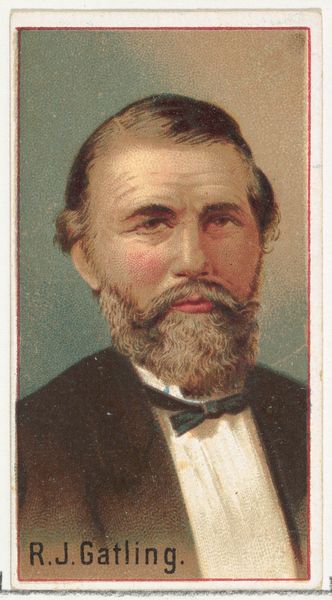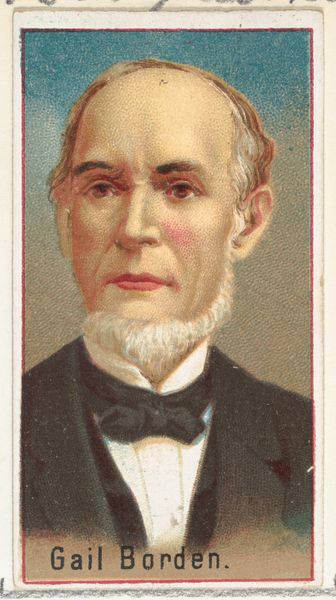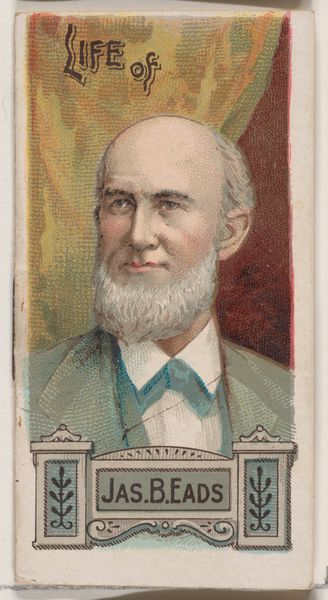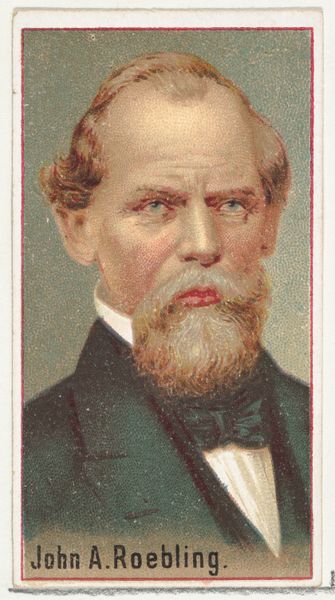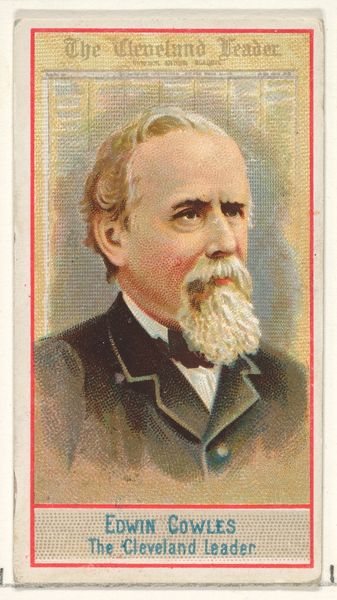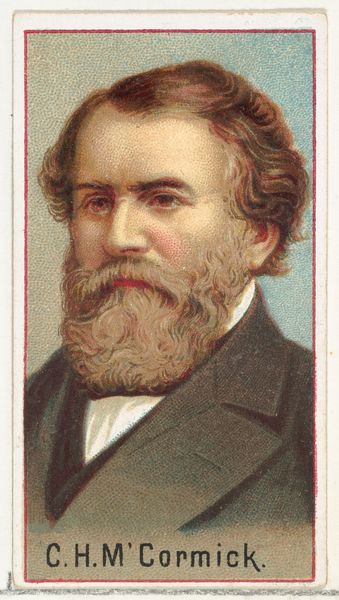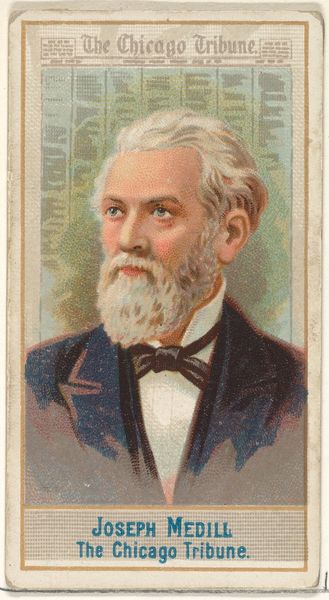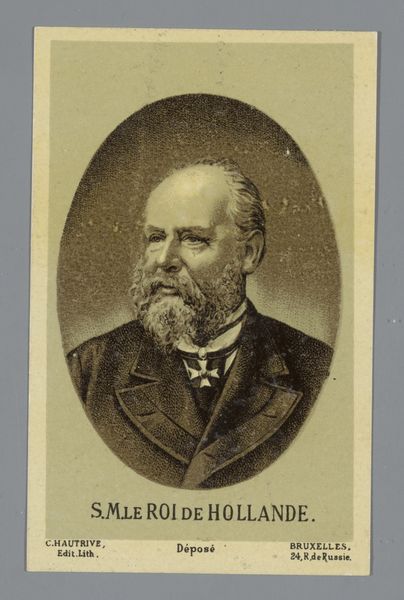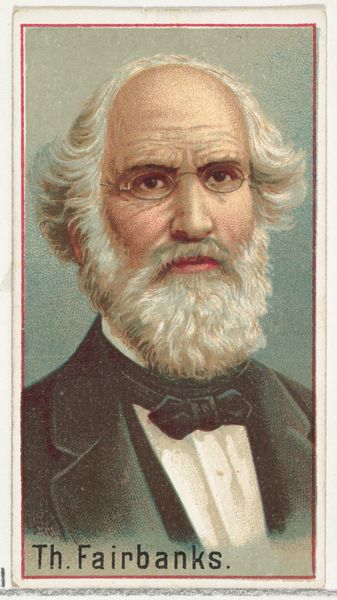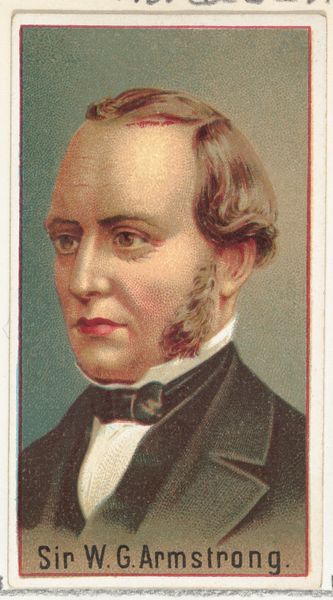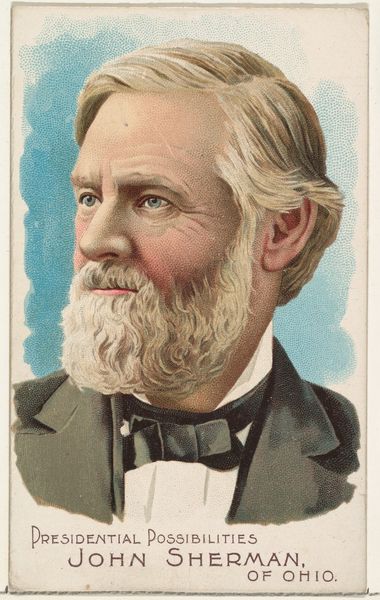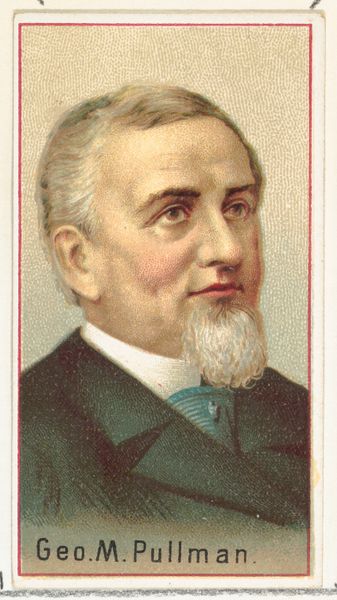
J. B. Eads, printer's sample for the World's Inventors souvenir album (A25) for Allen & Ginter Cigarettes 1888
0:00
0:00
drawing, print, photography
#
portrait
#
drawing
# print
#
photography
#
genre-painting
Dimensions: Sheet: 2 3/4 x 1 1/2 in. (7 x 3.8 cm)
Copyright: Public Domain
Curator: Look at this small, yet captivating, printed portrait from 1888. It's titled "J. B. Eads, printer's sample for the World's Inventors souvenir album (A25) for Allen & Ginter Cigarettes." What's your initial take? Editor: It has a very formal feel. Stern, almost, like a portrait commissioned to mark an important achievement, and meant to reinforce a particular image of this man, J.B. Eads. Curator: Right. And understanding that context – that these cards, like this one featuring Eads, were included in cigarette packs – reveals a lot about how industry courted influence and aspiration in everyday life at that time. We need to consider Allen & Ginter’s relationship with industrial expansion. Editor: Precisely. Allen & Ginter's connection to the burgeoning tobacco industry immediately frames the piece within systems of production and consumption. What kind of printing process was used? It looks like a chromolithograph—layered inks built up to give depth and color to what was a mass-produced image, and that creates an immediate connection to industry. Curator: I agree. The industrialization of portraiture via cheap, reproducible printing had vast implications, changing representation itself. Here, a portrait once reserved for elites became democratized through industrial ingenuity and popular consumption, influencing conceptions of fame, success, and historical narrative. What is being consumed, in this instance, beyond tobacco, relates directly to industrial progress. Editor: The card format, so diminutive, speaks to a certain disposability but also an accessibility. It was designed to be handled, traded, and collected. Consider how tobacco workers contributed to this cycle – growing, harvesting, curing, manufacturing. Also the paper and inks; those elements, sourced and fabricated for these purposes, represent human capital at work. This is how these seemingly innocuous things can unveil networks of manufacturing, from labor and material extraction. Curator: I'd argue that this card reflects how ideologies around progress and innovation were manufactured and disseminated alongside consumer goods. So this printer's sample, designed for promotion, acted as both product and propaganda. Editor: It’s a fascinating glimpse into how commodities shaped and continue to shape social consciousness. Next time you light a cigarette—no, on second thought... Curator: Let’s just be thankful we can draw such rich narratives from seemingly simple commercial ephemera like this!
Comments
No comments
Be the first to comment and join the conversation on the ultimate creative platform.
